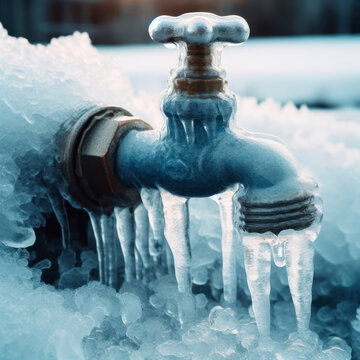Protecting Your Pipes from Freezing Issues: Essential Approaches
Protecting Your Pipes from Freezing Issues: Essential Approaches
Blog Article
We've discovered this article on Prevent Frozen Pipes directly below on the web and reckoned it made sense to talk about it with you here.

Cold weather can damage your plumbing, particularly by freezing pipelines. Right here's just how to avoid it from taking place and what to do if it does.
Introduction
As temperatures decrease, the danger of frozen pipes increases, possibly resulting in expensive repairs and water damages. Recognizing exactly how to prevent icy pipes is vital for homeowners in cool climates.
Avoidance Tips
Shielding at risk pipelines
Cover pipes in insulation sleeves or make use of warm tape to shield them from freezing temperatures. Concentrate on pipes in unheated or exterior areas of the home.
Home heating methods
Keep interior rooms adequately warmed, particularly locations with plumbing. Open cabinet doors to enable cozy air to distribute around pipes under sinks.
Just how to recognize frozen pipelines
Look for decreased water circulation from faucets, unusual smells or sounds from pipes, and visible frost on subjected pipelines.
Long-Term Solutions
Architectural adjustments
Consider rerouting pipelines away from exterior walls or unheated areas. Add additional insulation to attic rooms, cellars, and crawl spaces.
Upgrading insulation
Invest in premium insulation for pipelines, attics, and walls. Proper insulation aids maintain constant temperature levels and reduces the risk of icy pipes.
Safeguarding Exterior Plumbing
Garden hose pipes and outdoor faucets
Disconnect and drain garden tubes prior to wintertime. Install frost-proof faucets or cover outdoor taps with insulated caps.
Recognizing Icy Pipelines
What triggers pipes to ice up?
Pipelines ice up when subjected to temperatures below 32 ° F (0 ° C) for prolonged durations. As water inside the pipes freezes, it expands, taxing the pipeline wall surfaces and possibly triggering them to break.
Dangers and problems
Frozen pipelines can lead to supply of water interruptions, home damage, and expensive fixings. Ruptured pipelines can flooding homes and create extensive structural damage.
Indications of Frozen Water Lines
Determining icy pipelines early can avoid them from bursting.
What to Do If Your Pipes Freeze
Immediate actions to take
If you think icy pipelines, maintain taps open to relieve stress as the ice melts. Utilize a hairdryer or towels soaked in hot water to thaw pipes gradually.
Final thought
Protecting against frozen pipes requires aggressive measures and fast actions. By comprehending the reasons, indicators, and safety nets, homeowners can protect their pipes during cold weather.
6 Proven Ways to Prevent Frozen Pipes and Protect Your Home
Disconnect and Drain Garden Hoses
Before winter arrives, start by disconnecting your garden hoses and draining any remaining water. Close the shut-off valves that supply outdoor hose bibs and leave the outdoor faucet open to allow any residual water to drain. For extra protection, consider using faucet covers throughout the colder months. It’s also important to drain water from any sprinkler supply lines following the manufacturer’s directions.
Insulate Exposed Pipes
Insulating your pipes is an effective way to prevent freezing. Pipe insulation is readily available at home improvement stores and is relatively inexpensive. Pay close attention to pipes in unheated areas such as the attic, basement, crawl spaces, or garage. Apply foam insulation generously to create a buffer against the cold. You can also wrap your pipes in heat tape or thermostat-controlled heat cables for added warmth.
Seal Air Leaks
Inspect your home for any cracks or openings that could let in cold air. Seal any holes around the piping in interior or exterior walls, as well as the sill plates where your home rests on its foundation. Additionally, make sure to keep your garage door closed unless you’re entering or exiting. Leaving it open creates a significant air leak that can lead to frozen pipes.
Allow Warm Air Circulation
During cold snaps, it’s essential to allow warm air to circulate evenly throughout your home. Leave interior doors ajar to promote better airflow. Open kitchen and bathroom cabinets to help distribute heat consistently around the rooms. If you have small children or pets, be sure to remove any household chemicals or potentially harmful cleaners from open cabinets for safety.
Let Faucets Drip
A small trickle of water can make a big difference in preventing ice formation inside your pipes. When temperatures drop significantly, start a drip of water from all faucets served by exposed pipes. This continuous flow helps prevent the water from freezing. Additionally, running a few faucets slightly can relieve pressure inside the pipes, reducing the chances of a rupture if the water inside does freeze.
https://choateshvac.com/6-proven-ways-to-prevent-frozen-pipes-and-protect-your-home/

Do you enjoy reading about Winter Plumbing Precautions: Preventing Frozen Pipes? Make a review directly below. We will be happy to listen to your insights about this posting. In hopes that you visit us again in the future. Enjoyed reading our entry? Please share it. Let other people find it. Thanks for your time. Come back soon.
Explore Report this page